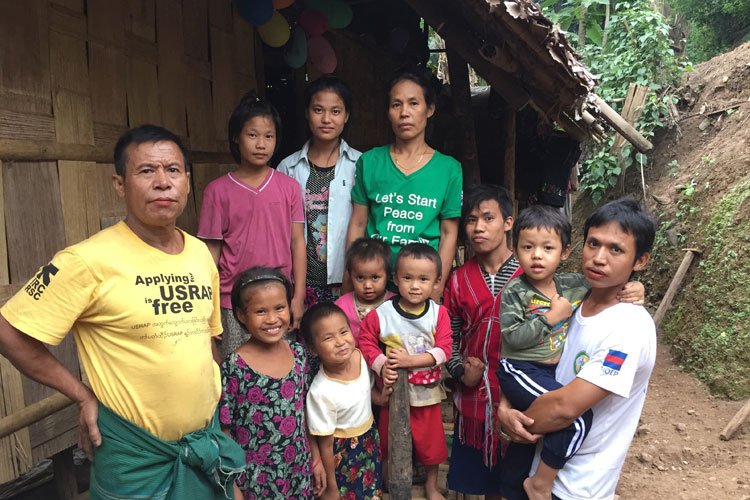
Family
Karen families are cross-generational; it is common for many generations to live close to each other. Parents, children, and grandparents often live under the same roof. On average, Karen families usually consist of four or five children, but infant and child mortality rates are very high. After marriage, a husband will come to live with his wife and her parents. Karen culture is a matriarchal society and men and women are considered equal. The women are the head of the spirit clan while the husband becomes part of the wife’s clan at marriage.
It is common for the daughter and her husband to stay and take care of her family, the son can also undertake this duty. If one is married, traditionally, he or she will not be able to go to school. Although it is rare, if divorce occurs, children stay with the mother. It is uncommon for males and females to live together before marriage, but this value is changing with time.
Traditionally, either a boy or girl can propose marriage. However, it is common in Burma and Thailand for the whole village to be allowed or welcomed to contribute opinions on whether a marriage would be appropriate. Oftentimes it is appropriate so not to upset spirits. Weddings are festive occasions when both the bride’s and groom’s villages gather together to celebrate. Marriage is considered to be for life and is valued. Among all Karens despite faith, adultery is considered a taboo that could negatively impact the village.
Relationships
For a polite greeting, a Karen holds his or her right elbow in their left hand, and shakes hands with the right hand. They use the same gesture to give or offer objects to other people. Introductions will include titles Karens use with their names, usually Saw for men and Naw for women.
The Karen are hospitable and will expect any guests to eat with them and, if possible, stay overnight or longer. Often times as a sign of respect. In traditional Karen bamboo houses, sleeping quarters for guests are on the veranda.
In traditional animist villages, funerals have been socializing scene for boys and girls to meet. However, it is more common now for boys and girls to meet in school, at Buddhist festivals, or in Christian youth groups. When a young couple gets involved, love letters and secret messages are regularly exchanged. Sometimes a rhyme game is played between groups of boys and girls. The topic of the game is usually about questions and answers involving romance. Boys ask poetic questions and the girls respond with rhyming answers.


 (651)788-7593
(651)788-7593


